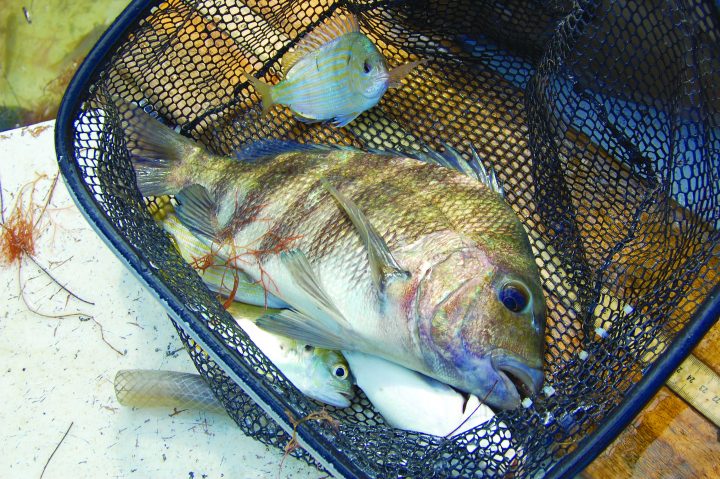
With closures for many of the bottom species anglers love to target, this time of year can be tough for bringing fresh fish to the dinner table. But there’s a largely overlooked delicacy out there for those who want to get on the water and have some fun collecting meat.
During the winter months, many sheepshead leave their normal inshore environs and venture out to nearshore rocks and reefs to begin spawning behavior. A contingent will also remain inshore, on the same bridges, docks and rocks where they spend most of the year. So, whether you’d prefer to take a little ride to give yourself the opportunity of tangling with some of the other nearshore denizens or if you prefer to stay closer to home, chances are you can find sheepshead willing to bite.
But convincing a sheepshead to bite is one thing, setting the hook in the “convict fish” is another. Convict is a fitting name for the species, both for its black-striped appearance and its proclivity for stealing bait. Half jokingly, some say it is necessary to set the hook before a sheepshead bites. While that might not be exactly true, successfully hooking up with these thieves takes practice and some slightly specialized tactics.
For bait, fiddler crabs or fresh shrimp are hard to beat. Hooks should be small, 1/0 is a good because it’s small enough to fit in that little mouth full of blocky teeth, yet strong enough to withstand the crushing power. Remember, sheepshead crunch up crabs, mussels, oysters and barnacles as their regular diet, light wire hooks do not stand a chance.
Spinning gear matched to 10-pound test mono is typically enough to handle “heads,” which will generally run in the 1- to 3-pound range but show up weighing 5 pounds and heavier. The light tackle also makes for a sporting fight. Pound-for-pound, sheepshead are powerful, and they have a knack for wrapping line around structure.
Many anglers who specialize in sheepshead like a dropper rig, with the weight on the bottom and the hook, or hooks, suspended in-line a couple feet up, all on a 20-pound or heavier leader. Again, resistance to those teeth is important, but go too heavy or use wire and they won’t bite. The beauty of the dropper is a direct connection between the rod and the bait and no slack in the line. This enables the angler to feel the bite, or an unusual weight on the line, instantly and set the hook before a thief makes off with the bait.
And while you likely won’t fill the cooler as efficiently as you would with a single 20-pound grouper, the meat on a sheepshead is light and sweet from a diet of crustaceans. Cleaning them can be difficult (watch out for those sharp spines), but there is plenty of good eating on them, and it’s relatively easy to load a cooler if you get on top of a good school of them.